On July 16, President Trump will have his first formal meeting with Russian President Vladimir Putin. The leaders have already met informally twice—last July, on the sidelines of the G-20 summit in Germany, and last November at the Asia-Pacific Economic Cooperation (APEC) summit in Vietnam.
The highly anticipated meeting in Helsinki comes on the heels of the NATO summit in Brussels, where President Trump quickly struck a confrontational tone with allies. He has lambasted NATO allies for not paying enough for collective defense and for supposedly taking advantage of the United States, singling out Germany as the worst offender. While President Trump did reaffirm U.S. commitment to the alliance at the end and signed onto the joint communiqué, the mood in Brussels was tense. European allies are now nervously anticipating the Trump-Putin summit, which is likely to be a cordial or even glowing meeting, to see if the U.S. president reneges on his commitments to the Allies.
Usually, one-on-one meetings with adversarial heads of state are carefully orchestrated—the final capstone of a long negotiation process rather than the opening salvo. But as we’ve seen with President Trump’s meeting with Kim Jong-un last month, this administration is throwing protocol out the window. Trump is doing everything in reverse, and that means that everything—including major U.S. concessions to Russia—is on the table. Unlike with the Kim summit, where the administration at least had a general set of objectives, there is no clear agenda or set of deliverables ahead of Trump’s meeting with Putin. National Security Advisor John Bolton said in June that the meeting itself is the deliverable. That is, of course, a low bar.
It’s unclear what the United States wants from Russia.
In fact, the Kremlin has pushed for this meeting for months. Putin has a lot to win and nothing to lose.
1First, it’s an opportunity for Putin to be seen on equal standing as the U.S. president. The optics of two great powers meeting to decide the fate of the world is in itself is a win from the Russian perspective. And President Trump is likely to have much warmer words for Putin than he had for Europe.
2Second, Putin and his advisers likely learned from the Trump-Kim summit, noticing that they now have a huge opportunity to get major concessions without agreeing to anything in return. And Putin is in an even better position than Kim was: It’s unclear what the United States wants from Russia. And in fact, Putin also knows that there’s very little that Russia could deliver to the United States. The only possible Russian offer would be to promise to exert more pressure on Iran to limit its power in Syria and the Middle East more broadly. The move could also allow the U.S. president to justify pulling out the last of U.S. military presence out of Syria—something he promised to do on the campaign trail. Middle East allies—Saudi Arabia, Israel, and the United Arab Emirates—have reportedly pushed President Trump in that direction with Ukraine as the sacrificial lamb.
3Third, Russia has a long list of grievances with the West. President Trump, in his critiques of NATO and Europe, has signaled that he and the Russian president may be on the same page on some items. And Putin has a long wish list: stopping NATO’s open-door policy, ending U.S. troop presence in Western Europe, reducing U.S. military presence in the Baltics, cutting off all U.S. support for Ukraine, recognizing Crimea, and eliminating Western economic sanctions on Russia. President Trump has indicated that he may be in agreement with Putin on all of the above.
4Lastly, Putin may even be able to convince the American president that Russia should have decisionmaking power in its so-called “near abroad”—after all, Putin may argue, how would Trump feel if Russia started sending military aid to Mexico? If Trump were to agree, this would de facto give Russia what it has desired since the collapse of the Soviet Union: a Western-approved sphere of influence. This outcome would be the most dangerous, as it would invite Russian military aggression in Central Asia, the Balkans, and elsewhere.
Putin’s main concern as he prepares for the meeting with President Trump is likely going to be how to prioritize his wish list. Warm words are almost certain. A U.S.-backed agreement on Syria is also a possibility—just in the last few days, Putin has met with both Israeli Prime Minister Benjamin Netanyahu and a top advisor to Iran’s Supreme Leader Ayatollah Ali Khamenei, signaling that the Middle East might be at the top of Putin’s agenda. Even if the worst—U.S. recognition of Crimea and a Russian sphere of influence—is avoided, President Trump’s rattling of NATO is serving Putin’s interests well enough. And while the president’s top advisers are skeptical about the Putin meeting and remain supportive of NATO, the president will likely still follow his gut as he has in the past. And what his gut tells him when he’s in the same room one-on-one with Putin is anyone’s guess.
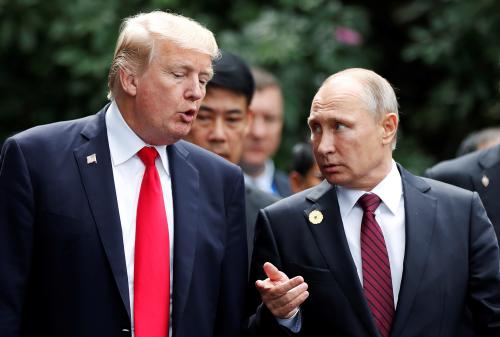
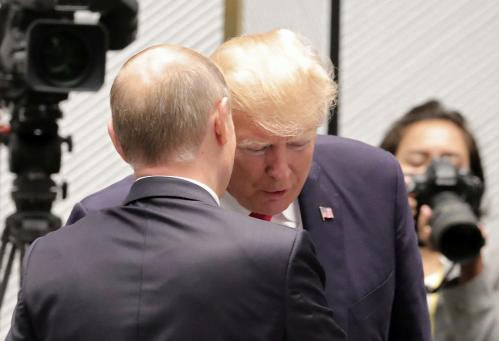
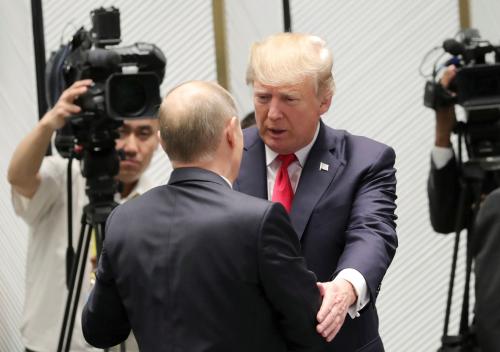

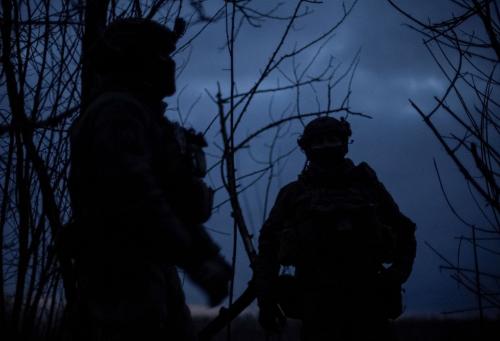
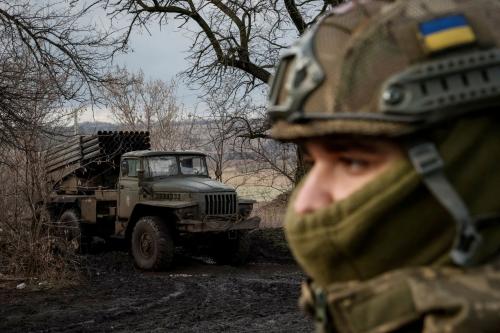
Commentary
What Putin wants in Helsinki
July 12, 2018